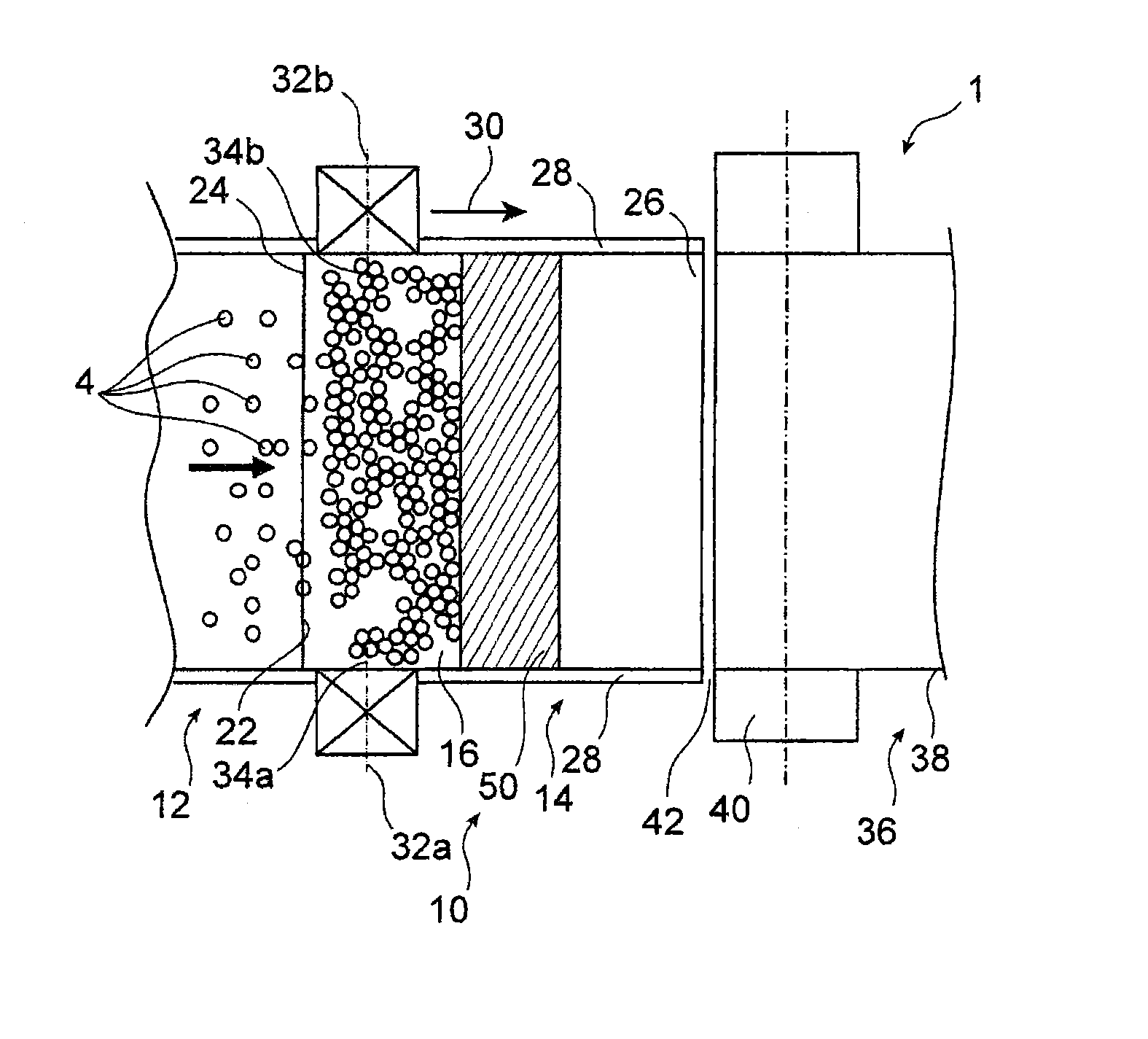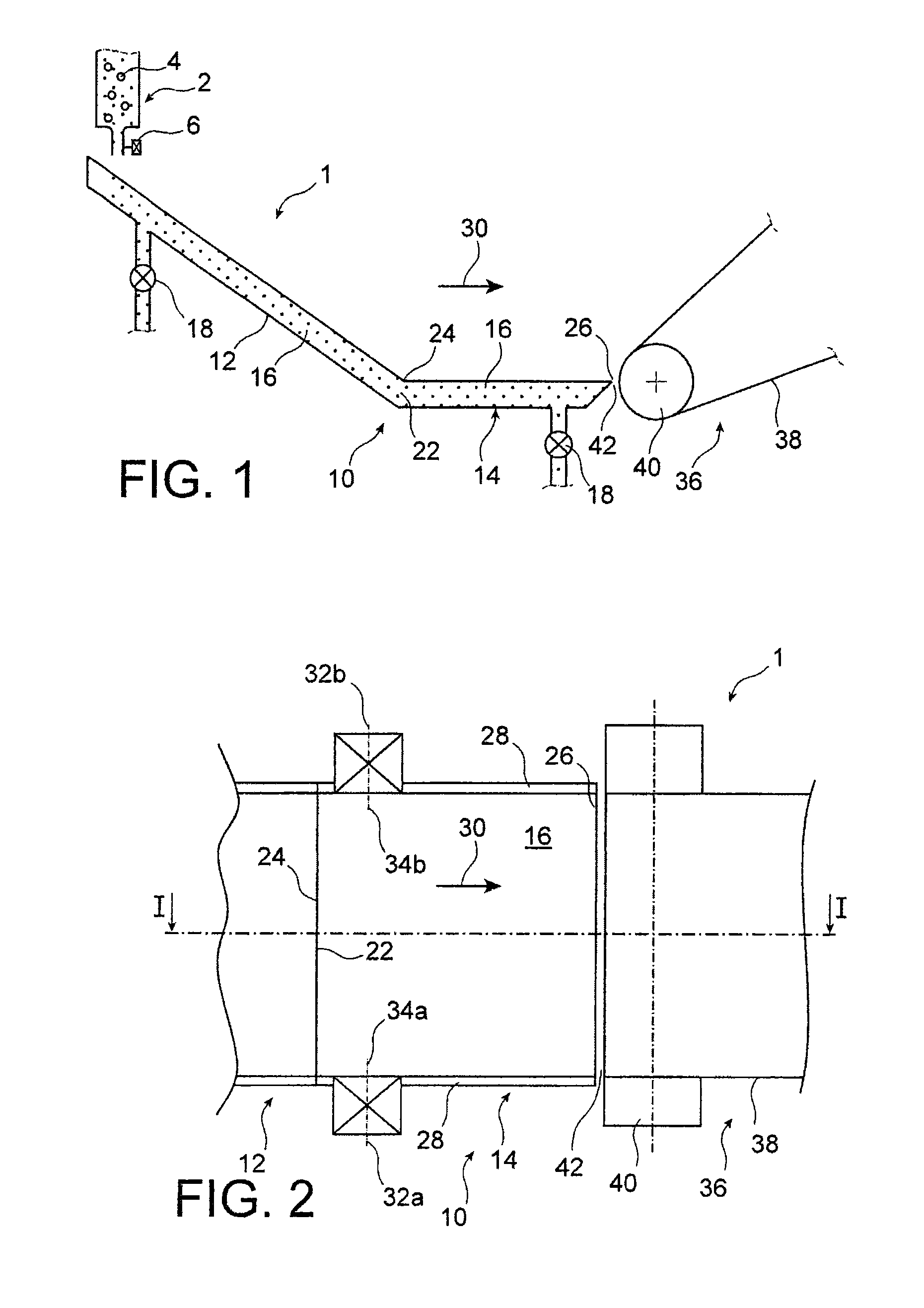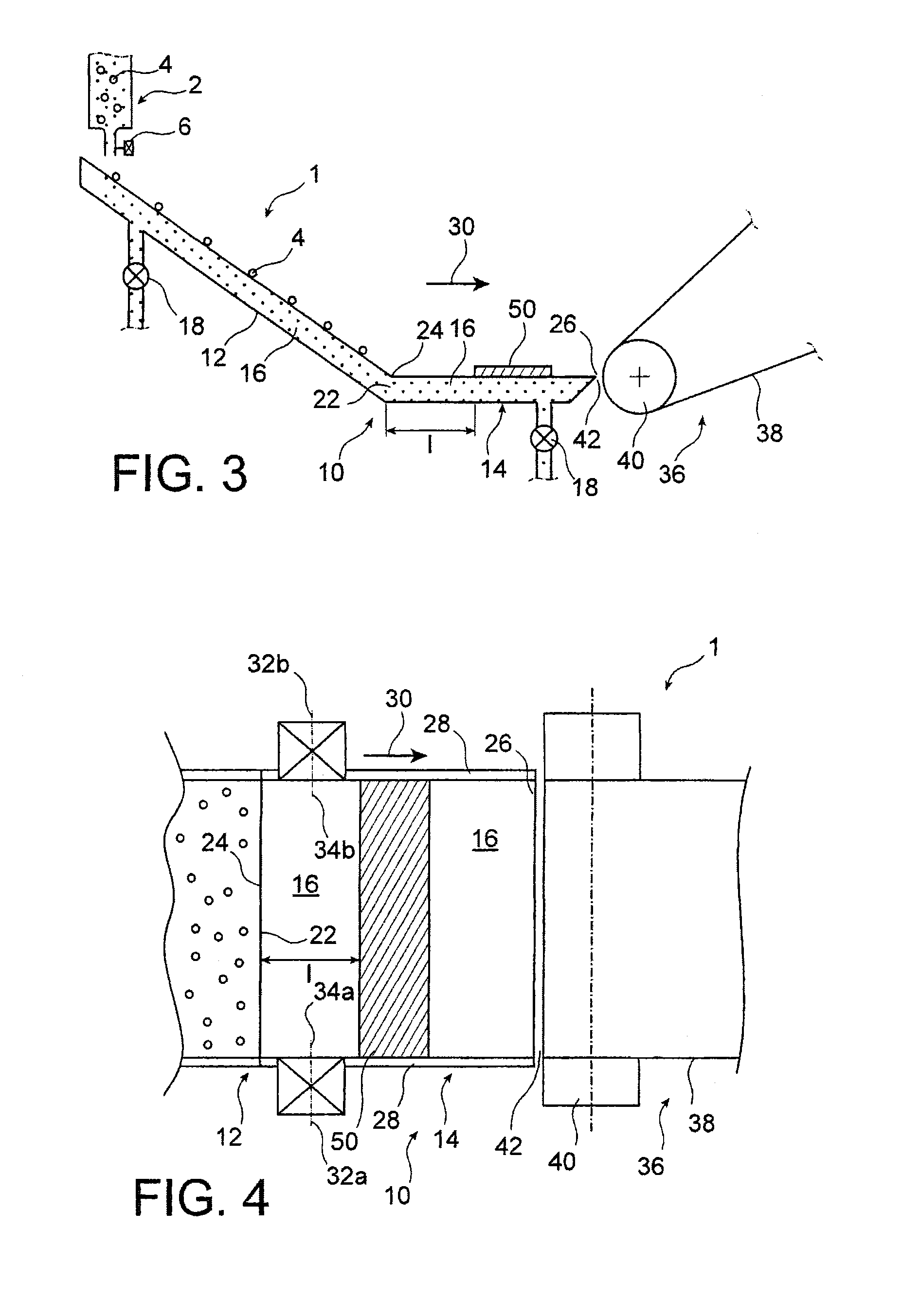Facility and method for depositing a film of ordered particles onto a moving substrate
a technology of ordered particles and moving substrates, which is applied in the direction of liquid surface applicators, coatings, etc., can solve the problems of non-homogeneous film, insufficient pressure force exerted by these particles, and inability to order particles before their own, etc., to achieve the effect of great simplicity of adjustmen
- Summary
- Abstract
- Description
- Claims
- Application Information
AI Technical Summary
Benefits of technology
Problems solved by technology
Method used
Image
Examples
Embodiment Construction
[0043]Referring first of all to FIGS. 1 and 2, a facility 1 for depositing a film of ordered particles onto a moving substrate may be seen.
[0044]The facility includes a device 2 for dispensing particles 4, the size of which may be comprised between a few nanometers and several hundred micrometers. The particles, preferably of spherical shape, may for example be silica particles.
[0045]More specifically, in the preferred embodiment, the particles are silica spheres with a diameter of about 1 μm, stored in a solution in the dispensing device 2. The proportion of the medium is of about 7 g of particles for 200 ml of solution, here butanol. Naturally, for reasons of clarity, the particles illustrated in the figures adopt a diameter greater than their actual diameter.
[0046]The dispensing device 2 has a controllable injection nozzle 6, with a diameter of about 500 μm.
[0047]The facility also includes a conveyor 10 of liquid, integrating a tilted ramp 12 for circulation of the particles, and...
PUM
| Property | Measurement | Unit |
|---|---|---|
| distance | aaaaa | aaaaa |
| particle size | aaaaa | aaaaa |
| thickness | aaaaa | aaaaa |
Abstract
Description
Claims
Application Information
 Login to View More
Login to View More - R&D
- Intellectual Property
- Life Sciences
- Materials
- Tech Scout
- Unparalleled Data Quality
- Higher Quality Content
- 60% Fewer Hallucinations
Browse by: Latest US Patents, China's latest patents, Technical Efficacy Thesaurus, Application Domain, Technology Topic, Popular Technical Reports.
© 2025 PatSnap. All rights reserved.Legal|Privacy policy|Modern Slavery Act Transparency Statement|Sitemap|About US| Contact US: help@patsnap.com



